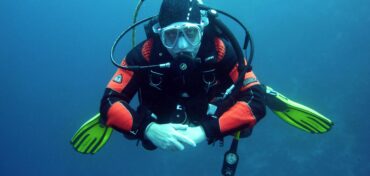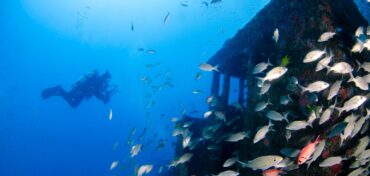The Polynesian Islands are renowned for their stunning beauty above the water. Still, beneath the surface, the true magic of this region comes to life. For SCUBA diving enthusiasts, the Polynesian Islands offer a wealth of incredible dive sites, each more spectacular than the last. As a PADI Master SCUBA diver, exploring the underwater world of the Polynesian Islands promises to be an unforgettable experience. Enjoy a SCUBA diving adventure in the Polynesian Islands.
Marine Life Diversity on your SCUBA Diving Adventure in the Polynesian Islands
One of the most captivating aspects of diving in the Polynesian Islands is the incredible diversity of marine life. Beneath the crystal-clear waters, you’ll encounter a dazzling array of colorful fish, majestic sea turtles, and graceful manta rays gliding effortlessly through the ocean depths. The vibrant coral reefs are teeming with life, a kaleidoscope of colors that will amaze you; what a beautiful SCUBA diving adventure in the Polynesian islands!
Rangiroa
One of the hottest dive spots in the Polynesian Islands is Rangiroa, located in French Polynesia. Known as one of the world’s most incredible dive destinations, Rangiroa’s Tiputa Pass is a thrilling dive site where you can see a stunning marine life display. Drift along with the current as you encounter schools of barracuda, dolphins, and even the occasional hammerhead shark. The abundance of marine life here is astounding, making it a favorite among experienced divers.
Bora Bora
Another must-visit destination for SCUBA diving in the Polynesian Islands is Bora Bora. Renowned for its stunning overwater bungalows and pristine beaches, Bora Bora also offers some of the most spectacular diving in the world. Explore the coral gardens and underwater caves, or dive alongside graceful eagle rays and reef sharks. The diverse range of dive sites around Bora Bora ensures that there’s something for divers of all experience levels to enjoy.
Marquesas Islands
Remote Diving For those seeking a more remote and untouched diving experience, the Marquesas Islands offer a pristine underwater paradise waiting to be explored. Dive among untouched coral reefs and encounter species of fish found nowhere else on Earth. The Marquesas Islands offer a truly immersive diving experience, where you can escape the crowds and dive in some of the most unspoiled waters in the world.
A SCUBA Diving Adventure in the Polynesian Islands
The Polynesian Islands are a true diver’s paradise, offering many incredible dive sites to explore. Whether you’re seeking the thrill of drift diving in Rangiroa, the stunning coral reefs of Bora Bora, or the untouched beauty of the Marquesas Islands, the Polynesian Islands have something to offer divers of all experience levels. Pack your gear and dive into the crystal-clear waters. Prepare for the underwater wonders that await you in the Polynesian Islands. Contact By The Shore SCUBA Instruction for your next SCUBA lesson, and call us to check out the group charters we offer. Your SCUBA diving adventure in the Polynesian islands will be unforgettable.






